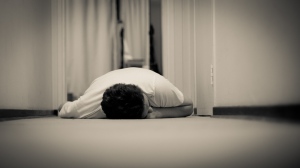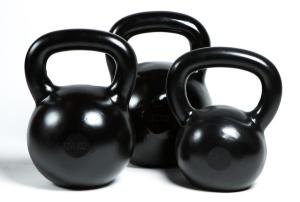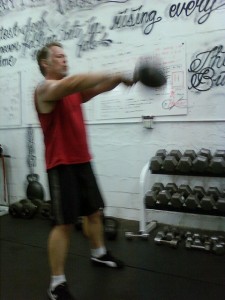Not having a clear goal
Lift your hand if you’re training for “General Fitness”. Now, please define what general fitness is. Is it being stronger? Is it being leaner? Is it having bulging hulk like muscles? Is it being able to perform a split? Define what you mean by “General Fitness” before you even approach a gym’s door or start surfing the internet for the greatest routine ever.
This post may help you in defining your goals.
Not eating right
I don’t care how much you do, how often, how big, or whatever, if you eat like crap you’ll fail, you’ll get frustrated and

Eat a right, varied and well-adjusted diet to get the most out of your efforts! Photo by epSos.de
eventually you’ll quit.
Personally, I’ve always been pig-headed and said no to eating well. Of course, thinking back, I would’ve probably gained a lot more taking care of something that’s simple. It what you need, not what you want. Want a (1) cheat meal? Fucking earn it.
Not training for strength
Want to build muscle mass? Get stronger first. Want to get leaner? Clean your diet and get stronger. Want more endurance? Get stronger first. More power? I think you get the point.
Unless you’re doing something very sport specific, strength training should be your go to module always. It’ll bring the best results overall. Mix in some MetCon after it if you still have the energy (you should)
Not being consistent
I’ve said enough about this, and there’s a lot on the matter all over the internet and books. Pick something and stick to it for 10-12 weeks, a bare minimum of 6. Then, please tell us about this magic you’ve experienced.
Doing too much or too little
Both sides of the coin are bad. Why? You do too much, you won’t be able to do as long, you’ll get injured, you’ll regress in

Doing too much will leave you depleted. Photo by Henti Smith
your training (true story). Doing too little will hamper your results since you won’t be eliciting a muscle response. Want the less of two evils? Go for too little (seriously).
This by no means should be taken as DO NOT PRACTICE EVERYDAY!
Second Step: Building your workout – is an older post of mine that may prove of help here.
Variety (probably your kryptonite)
Variety is a big problem. You’ll end up doing (probably) too much for each muscle group and not really going anywhere. You want to keep it simple. 5 exercises, 10 at most, TOTAL. Switch them during your training week and, read the post at the end of the last item (basically, the more you practice a certain movement the better and stronger you’ll get at it). Just keep your selection finite.
As a point I’m going to say that right now I’m not following my own advise. I’ve divided my movements into technique practice and strength practice. Eventually those techniques will be solid enough to become strength training in and of itself.
Failing regularly
Simply don’t go to failure on a regular basis. You still want to? Keep it to your last set of the week for a particular exercise. You’ll thank me later.
Resources that will keep you in the right path
Me: Yes, shameless self advertising. But, if you’re not yet following my blog I invite you to start 😉
Dan John: If he wrote it, then it’s right. Dan John said it should be enough in the world of strength training. This other link will get you to many other articles by him
Nerd Fitness: you probably heard of it. It’s a great site with a shitload of information. Never a dull read.
Start Bodyweight: Great resource for bodyweight enthusiasts
Breaking muscle: There’s a bit of everything here. A lot of material. I’m particularly fond of Andrew Read’s material (endurance athlete and coach. But could teach most strength trainers a lot).
If there are other Resources, blogs, etc. you’ll like to share, please do! All information is welcome!
Don’t forget to follow this blog!
Motus Virtute















